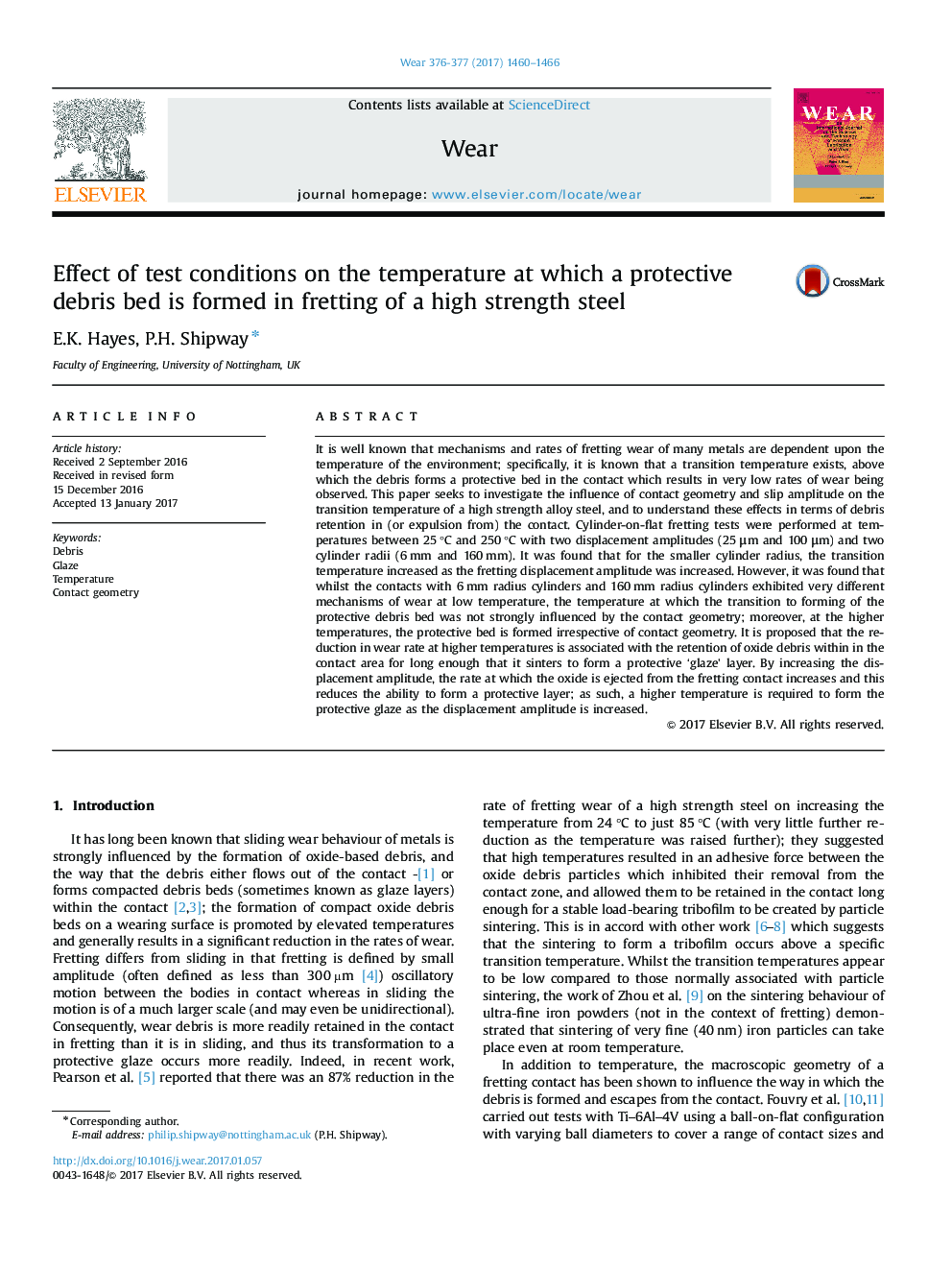| کد مقاله | کد نشریه | سال انتشار | مقاله انگلیسی | نسخه تمام متن |
|---|---|---|---|---|
| 4986592 | 1454952 | 2017 | 7 صفحه PDF | دانلود رایگان |
عنوان انگلیسی مقاله ISI
Effect of test conditions on the temperature at which a protective debris bed is formed in fretting of a high strength steel
ترجمه فارسی عنوان
تأثیر شرایط آزمون بر روی درجه حرارت که در آن یک تخت باقی مانده حفاظتی در فریتینگ یک فولاد با مقاومت بالا تشکیل شده است
دانلود مقاله + سفارش ترجمه
دانلود مقاله ISI انگلیسی
رایگان برای ایرانیان
کلمات کلیدی
باقی مانده، لعاب، درجه حرارت، تماس با هندسه،
موضوعات مرتبط
مهندسی و علوم پایه
مهندسی شیمی
شیمی کلوئیدی و سطحی
چکیده انگلیسی
It is well known that mechanisms and rates of fretting wear of many metals are dependent upon the temperature of the environment; specifically, it is known that a transition temperature exists, above which the debris forms a protective bed in the contact which results in very low rates of wear being observed. This paper seeks to investigate the influence of contact geometry and slip amplitude on the transition temperature of a high strength alloy steel, and to understand these effects in terms of debris retention in (or expulsion from) the contact. Cylinder-on-flat fretting tests were performed at temperatures between 25 °C and 250 °C with two displacement amplitudes (25 μm and 100 μm) and two cylinder radii (6 mm and 160 mm). It was found that for the smaller cylinder radius, the transition temperature increased as the fretting displacement amplitude was increased. However, it was found that whilst the contacts with 6 mm radius cylinders and 160 mm radius cylinders exhibited very different mechanisms of wear at low temperature, the temperature at which the transition to forming of the protective debris bed was not strongly influenced by the contact geometry; moreover, at the higher temperatures, the protective bed is formed irrespective of contact geometry. It is proposed that the reduction in wear rate at higher temperatures is associated with the retention of oxide debris within in the contact area for long enough that it sinters to form a protective 'glaze' layer. By increasing the displacement amplitude, the rate at which the oxide is ejected from the fretting contact increases and this reduces the ability to form a protective layer; as such, a higher temperature is required to form the protective glaze as the displacement amplitude is increased.
ناشر
Database: Elsevier - ScienceDirect (ساینس دایرکت)
Journal: Wear - Volumes 376â377, Part B, 15 April 2017, Pages 1460-1466
Journal: Wear - Volumes 376â377, Part B, 15 April 2017, Pages 1460-1466
نویسندگان
E.K. Hayes, P.H. Shipway,
